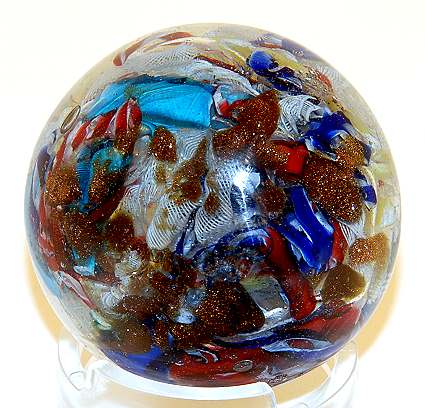
This is a hemispherical paperweight with an undulating surface that contains closely-packed multicolored filigrana (filigree canes) . Of ordinary commercial quality, typical of the 1840s, it is a crudely-made weight tht can be attributed to P. Bigaglia (Sarpellon 1995, fig. 560 and text) or G. B. Franchini (Hall 1991, p. 20 left-hand column), based on information contained in the citations. These two glassmen were collaborators living in the glassmaking center of Murano. Both glassmen also produced weights and other, similar items of higher quality than this weight that were displayed at national exhibitions. Such items are infrequently found in today's marketplace.
The filigree in this weight are closely-packed and near the surface, resulting in no magnification. It is assumed that the filigree are encased in cristallo which displays surficial striae swirled around the weight's apex. There is evidence that the entire surface was polished at an unknown date. Pellatt (1849, p. 22) mentions polishing as early as the 1840s, as well as depiction of a hand-colored image of a similar weight (plate VI). This polishing was possibly necessary because of deterioration of the enclosing glass envelope or, as Hall mentions, because of "an orange-peel look" to the surface of the glass. Hall's description pertains to Franchini weights of this period. Our weight's basal ring is intermittent because of the weight's surface irregularities, and wear on the basal ring is muted because of the polishing. A few burst bubbles on the weight's surface have created small craters, and there is a 0.5" x 0.25" sunken area that contains parallel corregations. These two flaws appear to have been made when the glass was maleable, the sunken area possibly made by a tool that was used in making the weight. There are also three small chips (less than 0.1"D) that were made after the polishing.
This is a well-filled, scrambled weight with fairly long strands, usually about 0.75" to 1.0" in length. There are no "bits and pieces" (chopped up canes). The filigree canes consist of colored straight and twisted ribbons, tubes, and multi-strand opaque-white twists (called latticino or latticinio). The colored ribbons, tubes, and twists were made by overlaying with color onto opaque-white surfaces. The colors include red, yellow, and three shades of blue: light, medium, and dark. All of the twists are twisted clockwise (downward to the right), and there are scattered clumps of "gold" aventurine through-out the weight. There is no murrine (cogs, rosettes, portrait canes, etc.) The weight has a few internal bubbles.
Scrambled antique Italian paperweight, mid-nineteenth century. D = 2.5" (6.35 cm), H = 1.9" (4.76 cm), wt = 0.6 lb (0.27 kg). Traded for digital photos. An independent appraisal of the weight in 2007 estimated its value to be "around the $400 range".
TOP VIEW:

BOTTOM VIEW:
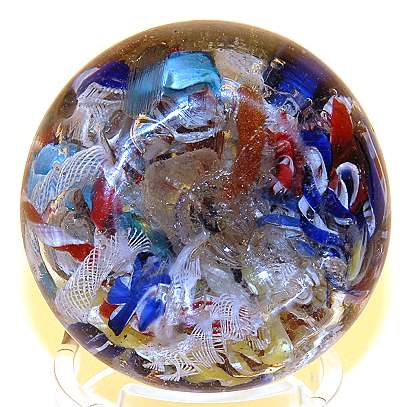
OBLIQUE VIEW:
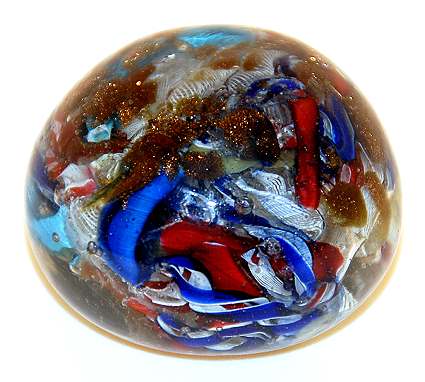
PROFILE VIEWS:
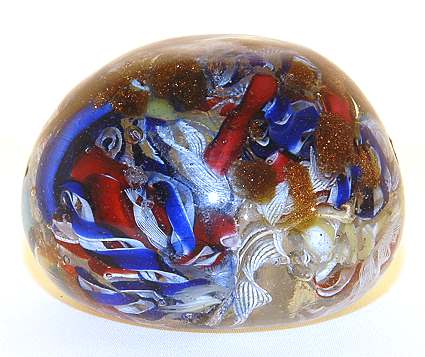
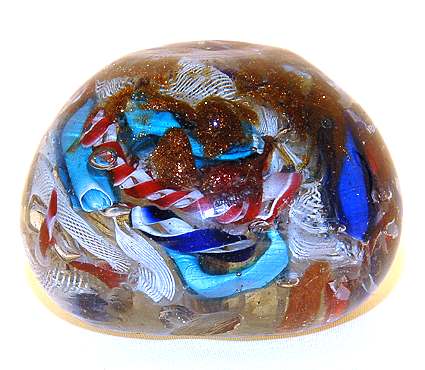
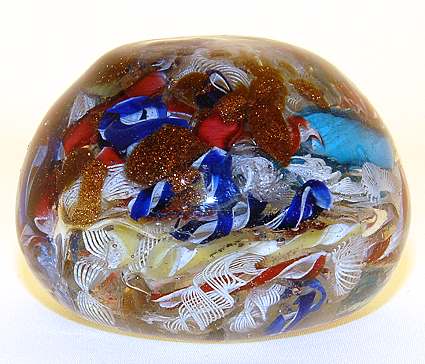
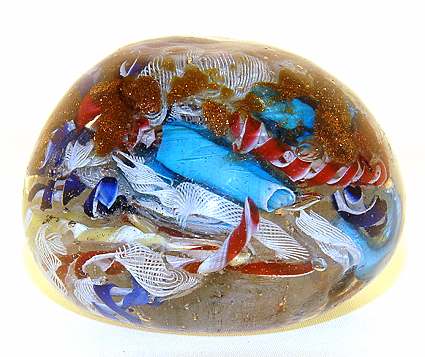
CLOSE-UP VIEWS::

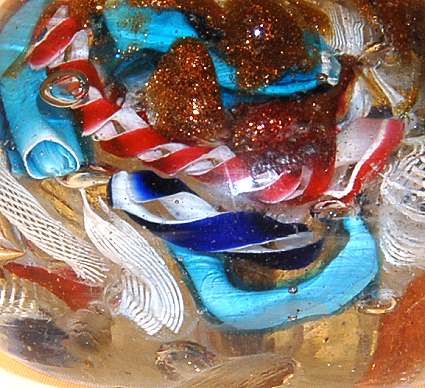
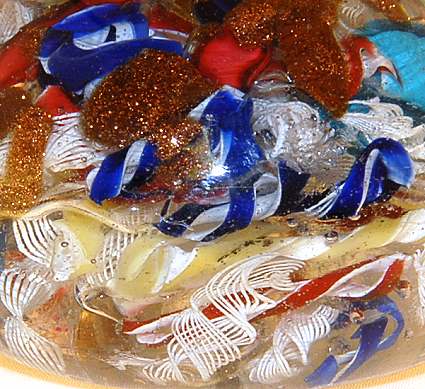


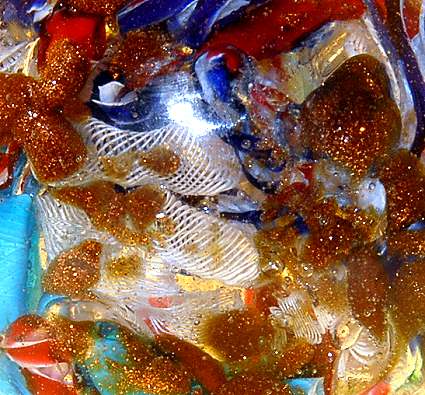
Updated 1 May 2007